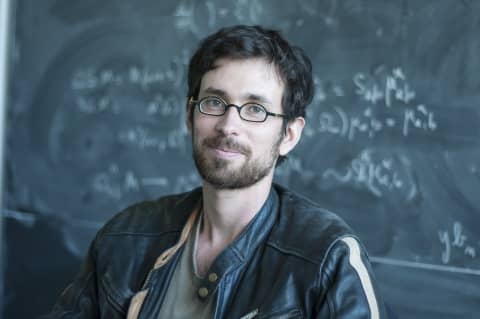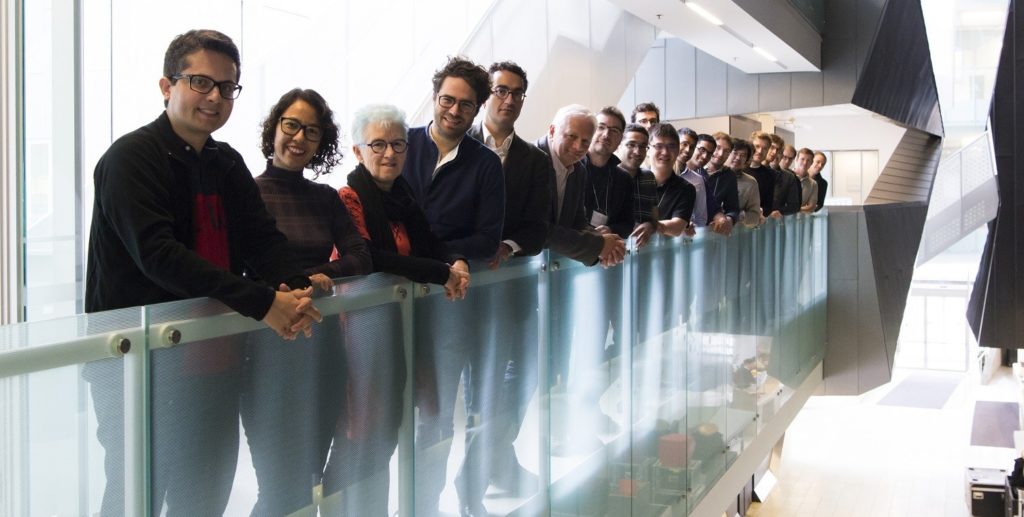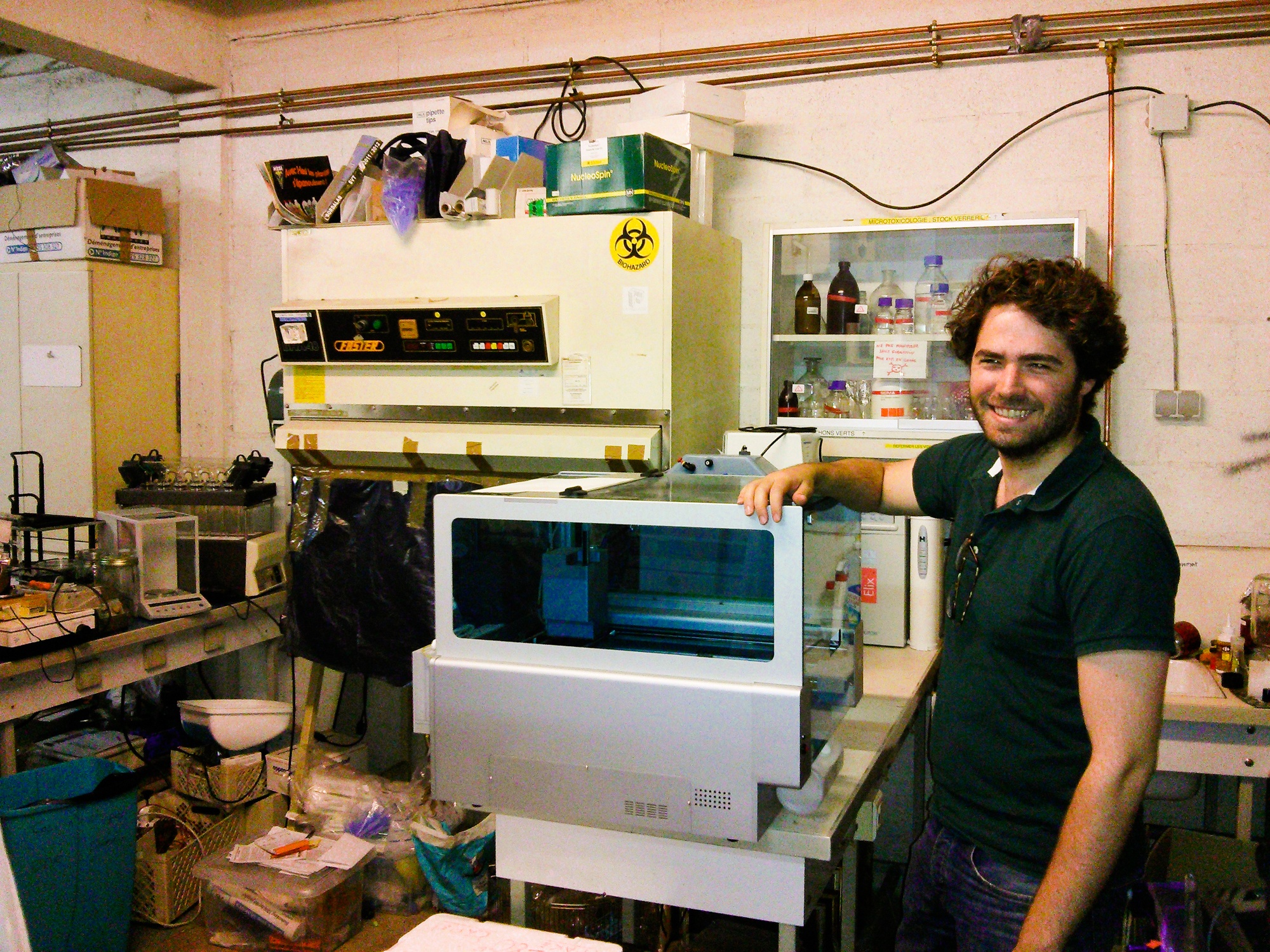Ask a young researcher what is most frustrating them right now, and they might not point to a complex formula or an intractable theory. Rather, many are vexed by something much larger: the structure of science itself.
As society embraces the likes of open data, makerspaces, and collaborative processes, the historical foundations of science – university departments, pay-walled journals, group membership – are starting to feel increasingly out-dated.
A growing number of scientists argue that changing not just how we do science, but how we share it as well, would unlock vast new opportunities. This new kind of science, they envision, would be open in both process and in practice.
Other fields have already embraced the ethos of openness: “open-source software” (think Linux and GitHub) is now well entrenched after arriving on the tech scene in the late 1980s, and “open innovation” is on the rise. “Open science,” however, is only now starting to gain traction.
An April gathering at Perimeter Institute aimed to give that effort a boost. The three-day “Open Research” conference brought together 30 scientists, designers, and entrepreneurs to map out an alternate, open reality, and to identify paths that could lead there.
Perimeter researcher Matteo Smerlak[/caption]
For co-organizer and physicist Matteo Smerlak, this is not an esoteric issue. His cross-disciplinary work intersects with several specialties, which means he’s often facing a steep learning curve. For established research, one can turn to books and monographs, but few authoritative resources exist for cutting-edge topics. People must instead rely on a flood of research papers – many of which can be overlapping or contradictory. In recent years, that flood has become an unruly torrent thanks to the proliferation of online journals and the concurrent rise in predatory journals.
Meanwhile, the “publish or perish” ethos of academia means young researchers feel pressure to devote crucial years to creating a publishing track record. This often means sticking to “safe” incremental science that’s likely to be publishable, and eschewing riskier work that could lead to bigger scientific payoffs. Compounding these issues is the increasing complexity of science itself.
By removing impediments that keep people out of research or muddy the flow of ideas, Smerlak believes that science could become more global and innovative. “A lot of science is really knowing what the good problems are. It’s not only the skills and it’s not only the data; it’s being part of a conversation that is contemporary and alive,” he said.
Despite their brilliance, researchers in developing countries are too often limited to working on old problems, he said. Much cutting-edge work begins as a conversation at a conference or institute. If you’re not physically there, or are not already on the radar of those involved, you’re left out of the loop.
“We have the internet now,” said Smerlak. “There should be ways to open up the problems as they are being invented or raised, and make that open to external contributions. There’s expertise out there that we’re not leveraging.” (Perimeter Institute’s PIRSA database is trying to close that gap by sharing cutting-edge lectures and discussions for free.)
But getting scientists to take the plunge into open research – particularly in fields where data is typically protected, such as biology – is like waiting for the first penguin to dive off an ice floe, said Benedikt Fecher, head of “knowledge dimension” research at the Alexander von Humboldt Institute for Internet and Society.
While penguins are afraid of being eaten by a shark, scientists are worried that others will use their data to publish first (and thereby get ahead in the race for tenure or grants), or that they won’t receive adequate credit for their ideas. That can make people who otherwise support the idea of open research reluctant to then follow through on it, Fecher said in his workshop presentation.
“There is an ideal of openness, and still a space to identify where it’s really worth it and relevant,” he said.
Complexity demands collaboration
Science is becoming more complex, and so are the problems scientists are facing. From astrophysics to epidemiology to climate change, the volume of data streaming in from experiments is opening windows on complex problems humans couldn’t tackle in the past.
Where scientific advances used to be made by individuals or small teams, the complexity of today’s breakthroughs requires global collaborations, said conference co-organizer Bapu Vaitla.
As a research fellow at Harvard University’s T.H. Chan School of Public Health, Vaitla explores the linkages between two extremely complex systems: ecosystem health and human health. It’s heavily collaborative work that encompasses everything from theoretical modelling to marine science.
“I think the acceleration of scientific progress is strongly dependent on our ability to create cooperative networks,” he said. “By democratizing the awareness of the problem and inviting everyone to come help solve it, we find that problems are solved quicker, errors are remedied quickly, and science moves forward at a faster rate.”
Attendees of the Open Research conference at Perimeter Institute, April 2018[/caption]
This doesn’t just impact new and emerging projects. One of the key challenges for open science – and one of its greatest promises – is finding a way to connect people to science that is already under way. The more people we can connect, the better off science will be, says Simon DeDeo, who runs the Laboratory for Social Minds at Carnegie Mellon University.
“Every scientist in the developed world – Canada, the United States, certainly in Europe – we get constantly emails from young scientists in places like India and China, who are seeking to connect with the kind of science we do here,” DeDeo said.
“Those kinds of connections, that democratization, that globalization of science, cannot be sustained by a model that was produced or really invented in 1830.”
Science has been through such revolutions before. In the late 1600s, the Royal Society of England was founded, with the motto “nullius in verba” (take no-one’s word for it). This built on the Republic of Letters and encouraged the sharing of ideas. Then came the rise of the journal, and with it the drive to publish results.
“We have a sense that we need something new,” DeDeo said. “One of the big challenges, and one of the big opportunities, for us to solve is not just open data, not just free access to publications, but a larger question of how do we rethink collaboration, how do we rethink the openness of science for the 21st century?”
Startups on the scene
Thomas Landrain has seen the impact of open research first-hand. He’s a synthetic biologist who started an underground “hacker space” lab called La Paillasse during his PhD, starting out with a handful of people, some refurbished lab equipment, and a basement squat.
The years that followed produced extraordinary results. The first project – created during the European horse meat scandal – was a cheap genetic diagnostic test to determine types of meat. Next came a collaboration with the State University of New York (SUNY) to work on biodegradable electronics, a project to produce ink using bacteria instead of petrochemicals (which was spun off into the startup Pili), and a NASA-funded project to design a low-cost, open-source bioreactor.
“When we opened the lab, I was expecting mostly biologists to come, but most of the people were non-biologists. They were people that wanted to do biology but never could,” he said.
La Paillasse founder Thomas Landrain during the lab's underground days in 2013.[/caption]
In 2014, La Paillasse moved to official premises in central Paris. A year later, it partnered with pharmaceutical company Roche to launch the Epidemium program, using big data to analyze cancer epidemiology. More than 300 people took part, most of them professionals working outside of science. One leading project was done by a team of data scientists who work in a bank. Another involved Marthe Gautier, the long-retired co-discoverer of Down syndrome.
“We’re not talking about citizen science,” Landrain said. “With citizen science, you have to over-simplify a problem to make it affordable for people to play with it. Here, we bring the raw aspect of research in its complexity. Whoever wants to come at it, then come at it.”
It didn’t matter to them how rigorous the science was. The point, he said, was simply to challenge themselves and to work out what infrastructure is needed in order to do research and produce innovations. So far, it’s led to robust results. “Every time we tried to work in a community manner in a very open, collaborative state, it worked marvellously well,” he said.
Landrain has now launched Just One Giant Lab (JOGL), a research and innovation lab that aims to partner with academia, corporations, foundations, and non-profits to tackle massive social and environmental issues. He sees the efforts as a complement to – not a replacement for – academia.
“We need academic researchers, we need professional researchers. [But] that monopoly should not be there,” he said. “Knowledge is infinite, so why not have also an infinite number of researchers?”
The need for cohesion
JOGL is just one of the organizations already moving into the open-research space. Conference attendees also included representatives from various knowledge-sharing and open research startups, including Open Parallel, CTRL Labs, and Knowen.
These early, tangible forays into open research can be seen as a promising endorsement of the idea, but they pose issues as well.
Without a dominant platform, the scientific community risks splintering among a dozen or so technologies. If so, the barriers between platforms would defeat efforts towards collaboration. Researchers will remain in silos, separated by technological walls and limited awareness of each other's work.
Who pays for open research is another unsolved question. Right now, most researchers also teach or work in industry. At Landrain’s labs, researchers are volunteers, relying on their day jobs to make a living. “People do it benevolently because they know it’s going to be useful for the greater good,” he said. “There is no exclusivity. Everything is based on open data, everything you produce is open source. We make it clear that we're not going to pay anybody, but we’re going to provide you the chance to have fun and learn, and to be able to express your talents or imagination.”
In the push towards open research, there is also a danger of inadvertently propagating one of the thorniest issues plaguing science today: its lack of diversity. As University of British Columbia microbiologist Rosie Redfield pointed out, those who make the norms shape them.
Today’s science tends to favour a certain kind of person: privileged, educated, first-world, often white, usually male. (For example, a recent paper in Nature Communications showed that women do not get the same speaking opportunities at conferences.) Without more diversity at these nascent stages, there is a risk that the same biases will be baked into whatever tools and processes are created for open research.
Redfield – who keeps a blog detailing her lab efforts, and was the only woman presenting at the three-day conference – says higher diversity does not require lower scientific standards. It just requires awareness and vigilance.
“You have to counteract your intrinsic, implicit, unconscious biases,” she said. “This isn’t a male thing. We all have these unconscious biases. It’s just that women are more aware of how women are being harmed by those biases, and we are working harder to overcome them.
“It’s not enough to be well meaning. It's not enough to be well intentioned. You have to actively work on yourself.”
Dividends are mostly for the young
So far, the most vocal pushback to open research has – as would be expected – come from the establishment.
Journals don’t want to relinquish their control over scientific communication, and the massive profits that come with it. More senior researchers who have devoted their careers to assembling particular datasets are hesitant to openly share them.
It’s mostly young researchers who are pushing for change, said Vaitla. “From this conference, the main takeaway for me has been that, more than creating tools, the real bottleneck to spreading open science is about shifting the norms,” he said.
Perhaps surprisingly, Vaitla sees theoretical physicists as particularly well placed to help lead the charge. “Theoretical physicists don't deal as much with datasets in the general sense that we understand them, as do other fields. The sharing of data is less of a concern,” he said.
“I think theoretical physicists in particular can be an interesting vanguard for this movement because they can identify a subset of problems that are perhaps a little bit easier to solve and create some momentum around.”
For Smerlak, the “Open Research” conference was a small first step. All participants recognized that much work lies ahead if their vision is to come to fruition, but both academics and startup founders seemed eager for the challenge. The conference attendees plan to produce a white paper from their discussions, in order to prompt further discussions and actions.
“Whether you look at this from a distance or you’re trying to make it happen, there’s a strong desire to come together,” Smerlak said.
“Open-source software is driven by a philosophy that's quite explicit and broadly shared by the main actors in the field. Scientists have had a philosophy of sharing ideas, being skeptical, reproducing results, trying to falsify results. There's no reason to think that we couldn’t have a common philosophy when it comes to open research.”
- With files from Stephanie Keating
Further exploration
- Watch: All the talks from the Open Research conference
- Watch: All the talks from the Open Research conference
- Big questions: Matteo Smerlak asks: can evolution be predicted?
- Diversity: Do we need to keep talking about women in science?
- Open access physics: Explore PIRSA, Perimeter's free archive of lectures, seminars, and colloquia
About PI
Perimeter Institute is the world’s largest research hub devoted to theoretical physics. The independent Institute was founded in 1999 to foster breakthroughs in the fundamental understanding of our universe, from the smallest particles to the entire cosmos. Research at Perimeter is motivated by the understanding that fundamental science advances human knowledge and catalyzes innovation, and that today’s theoretical physics is tomorrow’s technology. Located in the Region of Waterloo, the not-for-profit Institute is a unique public-private endeavour, including the Governments of Ontario and Canada, that enables cutting-edge research, trains the next generation of scientific pioneers, and shares the power of physics through award-winning educational outreach and public engagement.
You might be interested in





